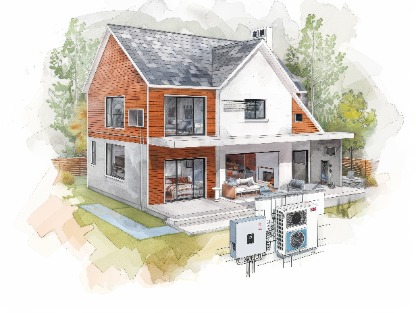To make sure you get the best whole-house fan for your home’s ventilation needs, homeowners in Newbury Park, Santa Clarita, Oak Park, Moorpark, Camarillo, or Los Angeles should keep a few key considerations in mind while shopping. These tips will help you choose the best type of fan for your home and enjoy optimal benefits.
What Is a Whole-House Fan?
A whole-house fan’s purpose is to circulate air throughout a house by drawing in cooler air from outside and releasing hot air outside. Most of these fans work by removing warm air from the house and directing it into the attic, where it creates a wind effect that cools the entire house.
What Types of Whole-House Fans Are There?
There are six primary types of whole-house fans to choose from. Direct-drive fans, compared to belt-drive whole-house fans, are smaller and typically cheaper because they don’t use a belt to link the motor to the fan. They can benefit homes ranging in size from small to medium.
Belt-drive whole-house fans are usually quieter because they use a belt-driven system to run. They work well in homes with more space or in areas where noise reduction is an issue.
Ducted fans allow placement in out-of-the-way locations, like the attic, giving more space to work with and minimizing noise in living areas.
Ceiling-mounted fans extract air from each room and send it through the attic or outside. They are easy to set up but may require greater attic space for adequate ventilation.
Wall-mounted fans are installed on an exterior wall rather than the ceiling, drawing air from inside and releasing it outside without attic access.
Roof-mounted fans are ideal when attic space is limited. They remove stale air through the roof to provide proper ventilation.
1. Airflow Capacity (CFM)
Choose a fan that circulates your home’s air 15–20 times per hour. Calculate CFM by multiplying your home’s square footage by the ceiling height and dividing by 3.
2. Noise Level
Fans are rated in sones; lower numbers indicate quieter operation. Bedrooms benefit from fans under 2 sones. Installation quality also affects noise.
3. Energy Efficiency
Look for ENERGY STAR-rated fans or DC motors for up to 70% energy savings compared to AC motors.
4. Size and Dimensions
Ensure there is enough attic space for your fan, including depth and framing requirements.
5. Installation Requirements
Consider electrical needs, dedicated circuits, and potential ducting. Consult an HVAC professional for code compliance and optimal placement.
6. Motor Quality and Durability
Select long-lasting motors, such as ball-bearing or brushless DC, for reliable performance and quieter operation.
7. Number of Speeds
Two-speed or variable-speed fans allow better airflow control. Variable-speed fans provide maximum comfort and efficiency.
8. Remote Control or Wall Switch Options
Modern fans offer remotes, wall controllers, or smart home integration for convenient operation across multiple floors.
If you have questions about whole-house fans in Newbury Park, Santa Clarita, Oak Park, Moorpark, Camarillo, or Los Angeles, Southland Heating & Air Conditioning is here to help. We also offer HVAC installations, heat pump maintenance, indoor air quality solutions, and a VIP membership program. Call us now to learn more about upgrading your home with a whole-house fan.

